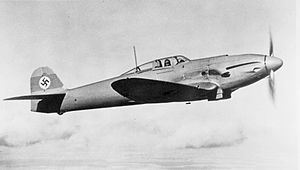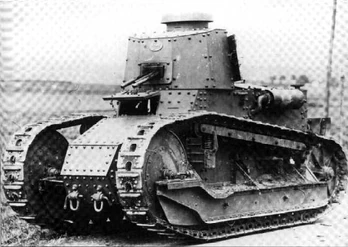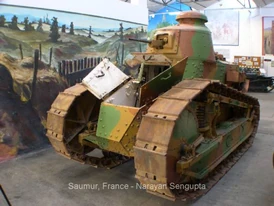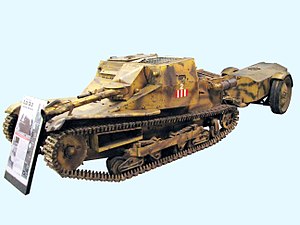German military intervention in Spain:
Technical advances
 Bf 109 C-1, Jagdgruppe 88, Legion Condor
Bf 109 C-1, Jagdgruppe 88, Legion Condor
One important factor in World War II which is thought to have directly resulted from the conflict is the technical development of the Messerschmitt Bf 109. The V3 – V6 types entered service in Spain directly from operational trials around January 1937. In the spring of 1938 these were joined by type C aircraft with type Es being first fielded in December 1938.
Tactics
As the fighting progressed into March 1938 Italian pilots under Fieldmarshal Hugo Sperrle were involved in thirteen raids against Barcelona.
 Hugo Sperrle in 1940
Hugo Sperrle in 1940
Sperrle was given command of the Condor Legion in November 1936 and fought with the expeditionary force in the Spanish Civil War until October 1937.
Condor Legion
https://en.wikipedia.org/wiki/Condor_Legion
Aircraft flown
Attack
 Henschel Hs 123
Henschel Hs 123
Number built 250 (approx)
the Hs 123s based in Seville were used for ground support, a role in which their range was not such a detriment, and where the ability to accurately place munitions was more important than carrying a large load.
 Ju 87Ds in October 1943
Ju 87Ds in October 1943
It first flew in 1935. The Ju 87 made its combat debut in 1937 with the Luftwaffe's Condor Legion during the Spanish Civil War.
Bomber
 Junkers Ju 86
Junkers Ju 86
 Heinkel He 111
Heinkel He 111
 Dornier Do 17
Dornier Do 17
Along with the Heinkel He 111 it was the main bomber type of the German air arm in 1939–1940. It saw action in significant numbers in every major campaign theatre as a front line aircraft until the end of 1941, when its effectiveness and usage was curtailed as its bomb load and range were limited.
Fighter
 Heinkel He 51
Heinkel He 51
 Heinkel He 51 C flown by "Adolf Galland" in the Spanish Civil War https://en.wikipedia.org/wiki/Adolf_Galland
Heinkel He 51 C flown by "Adolf Galland" in the Spanish Civil War https://en.wikipedia.org/wiki/Adolf_Galland
 Adolf Galland
Adolf Galland
This time of superiority was short lived, with the arrival of large numbers of modern aircraft from the Soviet Union, including the Polikarpov I-15 biplane and new Polikarpov I-16 monoplane,[8] together with the Tupolev SB bomber, which was 110 km/h (70 mph) faster.[9] The He 51 proved unable to protect the Legion Condor's bombers, forcing it to switch to night operations,[10] while also unable to intercept the much faster SB.[9] The He 51 was therefore withdrawn from fighter duty and relegated to the ground-attack role by both the Legion Condor and the Nationalists.
 Heinkel He 112
Heinkel He 112
Small numbers were used for a short time by the Luftwaffe and some were built for other countries, around 100 being completed.
 Messerschmitt Bf 109
Messerschmitt Bf 109
The Bf 109 first saw operational service in 1937 during the Spanish Civil War.
Reconnaissance
 Heinkel He 70
Heinkel He 70 First flight 1 December 1932
Transport

 Junkers Ju 52/3m
Junkers Ju 52/3m
Second World War as a troop and cargo transport; it was also briefly used as a medium bomber.
Military operations
Hitler decided to support the Nationalists in July 1936. The German air force was used to carry the Army of Africa to Spain. German transports moved nearly 2,500 troops from Spanish Morocco to Spain. 15,000 German troops fought on the Nationalist side, deploying 200 takns and 136 aircraft.
From 29 July to 11 October the Germans transported 13,523 Moroccan troops and 270,100 kilograms of war material from Morocco to Andalusia; and it was Franco's African forces, thus transported and supplied, which were a decisive factor in the war
The German military in Spain, who were later reorganised and renamed the Condor Legion, claimed to have destroyed a total of 372 Republican planes and 60 Spanish Republican Navy ships. They lost 72 aircraft due to hostile action and another 160 to accidents.
By the end of 1936, 7,000 Germans were in Spain. The Nationalists were supported by German units and equipment during the Battle of Madrid and during the Battle of Jarama of February 1937. The fighting demonstrated the inadequacy of the Legion's aircraft compared to superior Soviet-made fighters.[citation needed] The War in the North was supported by a constantly re-equipping Condor Legion.
The German North Sea Group around Spain, part of the Kriegsmarine, consisted of the pocket battleships Deutschland and Admiral Scheer, the light cruiser Köln, and four torpedo boats.
 Bf 109 C-1, Jagdgruppe 88, Legion Condor
Bf 109 C-1, Jagdgruppe 88, Legion Condor Hugo Sperrle in 1940
Hugo Sperrle in 1940 Henschel Hs 123
Henschel Hs 123 Ju 87Ds in October 1943
Ju 87Ds in October 1943 Junkers Ju 86
Junkers Ju 86 Heinkel He 111
Heinkel He 111 Dornier Do 17
Dornier Do 17 Heinkel He 51
Heinkel He 51
 Adolf Galland
Adolf Galland Heinkel He 112
Heinkel He 112 Messerschmitt Bf 109
Messerschmitt Bf 109 Heinkel He 70 First flight 1 December 1932
Heinkel He 70 First flight 1 December 1932 

 The BT-2 tank of 1932 was the first Soviet modification of Walter Christie's design.
The BT-2 tank of 1932 was the first Soviet modification of Walter Christie's design. BT-5 mod. 1933
BT-5 mod. 1933

 Italian L3/33 (CV-33), Flamethrower variant
Italian L3/33 (CV-33), Flamethrower variant L3/35
L3/35  Panzerkampfwagen I Ausf. A
Panzerkampfwagen I Ausf. A  T-26 mod. 1933
T-26 mod. 1933